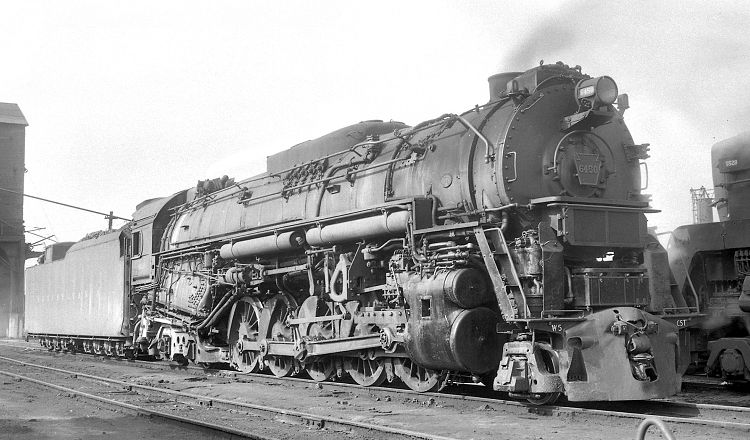With the traffic surge following America's entry into World War II, the Pennsylvania Railroad found itself in need of heavier freight power. Restrictions imposed by the War Production Board required the PRR to use an existing locomotive as the basis for its new power. It chose the Chesapeake & Ohio's class T-1 2-10-4, or Texas, type that had been built by Lima Locomotive Works in 1930. Although the PRR main line to Chicago passed through Lima, Ohio, none of these engines were erected by the builder of their prototype; all were constructed by the railroad's own shops at Altoona beginning in 1942. The Pennsylvania's fleet of 125 J-1 2-10-4s became the largest in North America.
This September 1950 photo, location and photographer unknown, from my brother David Leonard's collection shows No. 6450, the first of the PRR's J-1 class. Essentially following the C&O design, these engines had 69-inch drivers, 29x34-inch cylinders and a boiler pressure of 270 p.s.i. Their tractive effort was 95,100 pounds and they weighed 580,000 pounds minus their 16-wheeled tender. They featured a hefty 6568 square feet of evaporative heating surface and 2930 square feet of superheater surface. Being a copy of a "foreign" design rather than a home-made Pennsylvania Railroad product, they had Baker valve gears and lacked the standard PRR Belpaire firebox. Nevertheless, many authorities claim they were the Pennsylvania Railroad's finest steam locomotives. After being displaced by diesels in their original territory near Altoona they migrated to the PRR's western lines, and all were retired and scrapped by the late 1950s.
